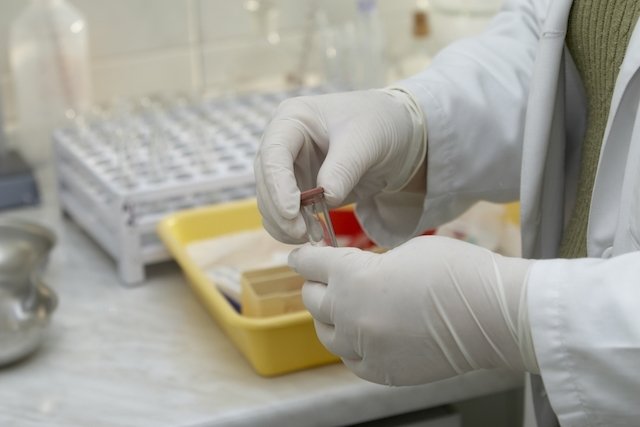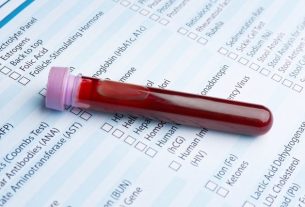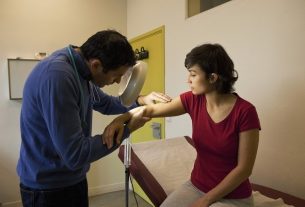The toxicological test is a laboratory test that aims to check whether the person has consumed or been exposed to some type of toxic substance or drug in the last 90 or 180 days, and this test has been mandatory since 2016 for issuing or renewing a driver’s license in the categories C, D and E, and must be carried out in laboratories authorized by DETRAN.
The main drugs that can be identified in the toxicological test are marijuana and derivatives, amphetamine, LSD, crack, ecstasy, heroin, cocaine and morphine, and the test can be carried out on blood, urine, hair, fur or sweat.
Despite being widely used in the process of issuing and renewing licenses, the toxicological examination can also be carried out in the hospital when there is suspicion of poisoning by toxic substances or anxiolytics, for example, informing in some situations the degree of exposure to this substance, in addition to to be used in cases of overdose to identify the substance responsible for the situation.

What is it for
The toxicological examination serves to identify which substances the person has used or come into contact with in the last 90 or 180 days and indicates the concentration of these substances in the body, with the main substances detected being:
- Marijuana and derivatives, such as Hashish;
- Amphetamine (Rivet);
- LSD;
- Crack;
- Morphine;
- Cocaine;
- Heroin;
- Ecstasy.
This test, however, does not detect the use of antidepressants, steroids or anabolic steroids, and another type of analysis must be carried out if it is necessary to check whether the person uses these substances.
Furthermore, the toxicological test does not include a test for alcohol consumption, so there is no problem in carrying out the test 1 day after drinking a beer, for example. Due to the fact that it is not included in the toxicological test, some companies may choose, in addition to requesting the toxicological test, to request the test to detect the amount of alcohol in the blood or even in the hair, and it is important that this is indicated in the test request.
If someone is smoking marijuana in the same environment, will this be detected during the test?
No, as the test detects the metabolites generated by the consumption of high concentrations of the drug. When breathing marijuana smoke that a person in the same environment is smoking, for example, there is no interference with the test results.
However, if the person breathes too quickly, remains exposed to smoke for a long time in a poorly ventilated environment, it is possible that there is external contamination. However, to prevent external contamination from interfering with the result, the sample is properly prepared in the laboratory before analysis, avoiding a false positive result.
When is indicated
Toxicological testing is mainly indicated as part of the admission process for truck drivers and bus drivers, for example, as it is possible to prove the person’s aptitude and if hiring the professional does not represent a risk for him or for the people transported, for example. In addition to being used in the admission exam, the toxicological exam can also be used in the dismissal exam to justify dismissal for just cause, for example.
Furthermore, the exam has been mandatory since 2016 for people who will renew or obtain a driver’s license in categories C, D and E, which correspond to the categories of cargo transport, passenger transport and driving vehicles with two units, respectively. .
This examination may also be indicated in some public competitions, in legal cases and in the hospital when there is suspicion of poisoning by toxic substances or medications, for example, in addition to being carried out in the case of an overdose to determine which substance is responsible.
How is done
To carry out the toxicological test, no type of preparation is necessary, the person only needs to go to the laboratory that carries out this type of test so that the material can be collected and sent for analysis. Detection techniques vary between laboratories and material analyzed, however all methods are safe and there is no chance of false positive results. When the test detects the presence of drugs, the test is done again to confirm the result.
Depending on the material collected, it is possible to obtain different information, such as:
- Blood: allows the detection of drug consumption in the last 24 hours;
- Urine: detection of consumption of toxic substances in the last 10 days;
- Sweat: identifies whether there was drug use in the last month;
- Hair: allows the identification of drug consumption in the last 90 days;
- By the: detects drug use in the last 6 months.
A toxicological test on hair or hair is the most recommended, as when the drug is consumed, it spreads quickly through the bloodstream and ends up nourishing the hair bulbs, allowing the identification of drug consumption in the last 3 to 6 months.

Sign up for our newsletter and stay up to date with exclusive news
that can transform your routine!
Warning: Undefined array key "title" in /home/storelat/public_html/wp-content/plugins/link-whisper-premium/templates/frontend/related-posts.php on line 12
Warning: Undefined array key "title_tag" in /home/storelat/public_html/wp-content/plugins/link-whisper-premium/templates/frontend/related-posts.php on line 13



